
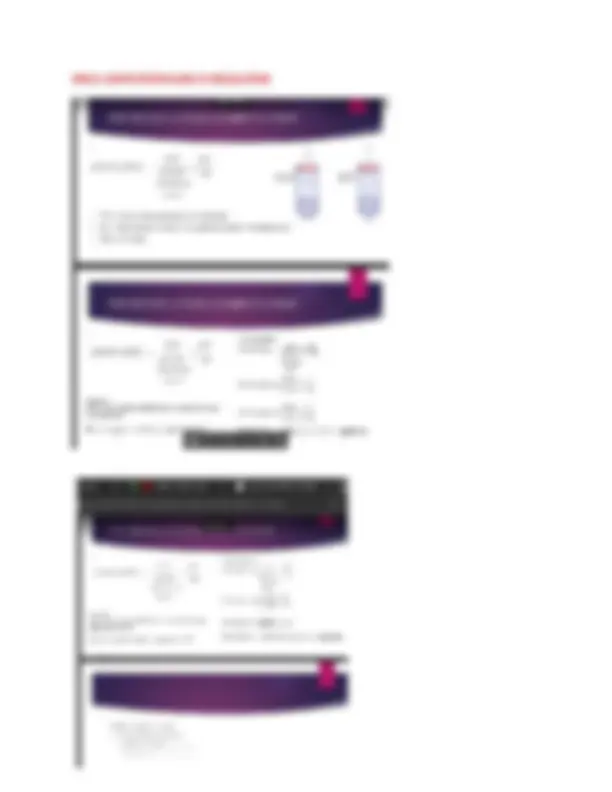
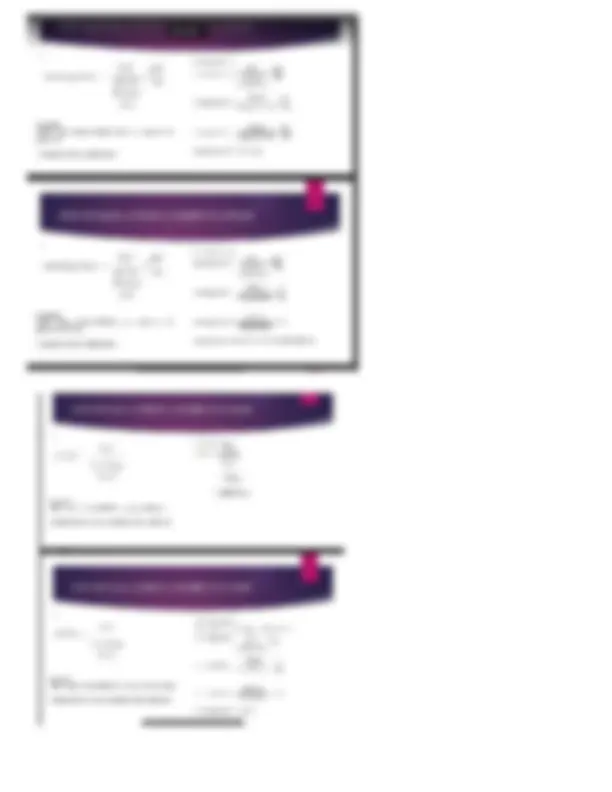
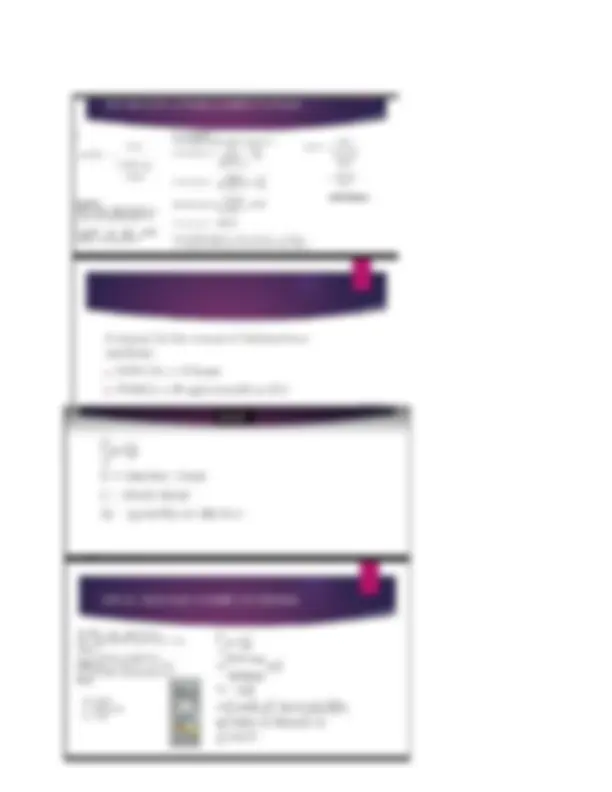
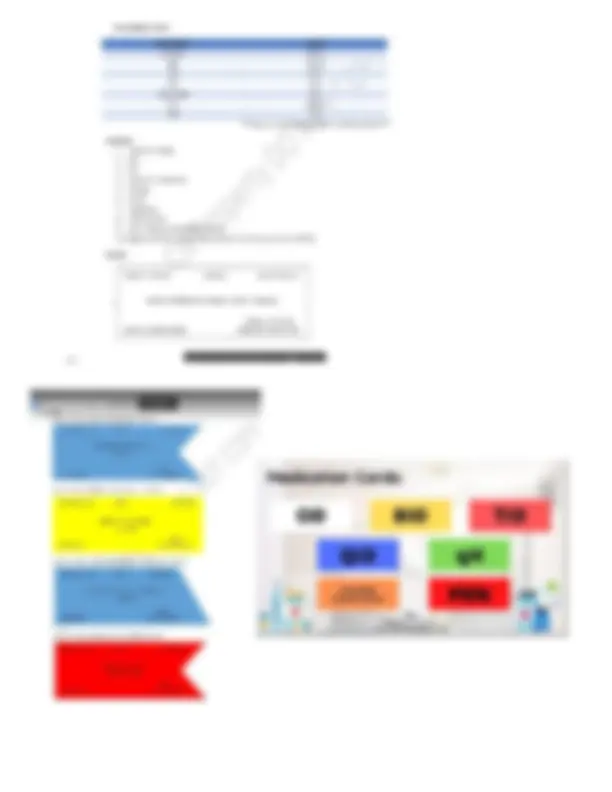
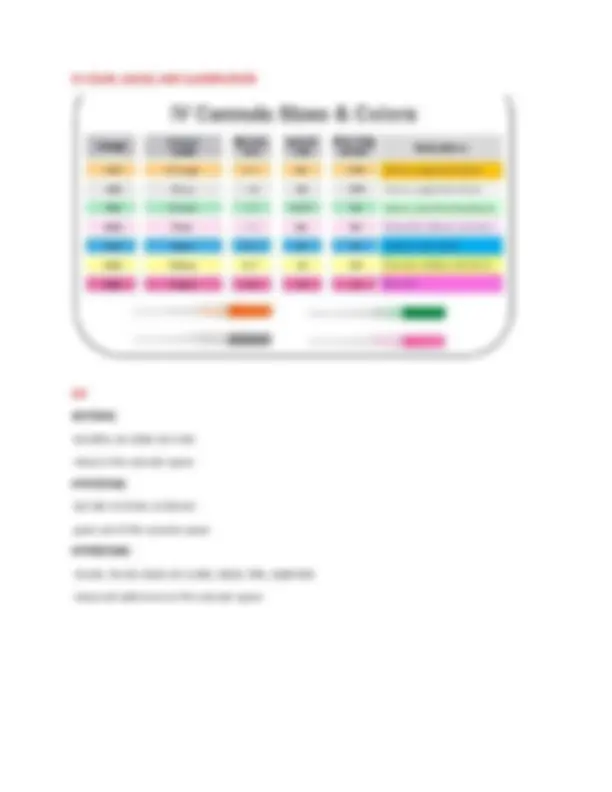
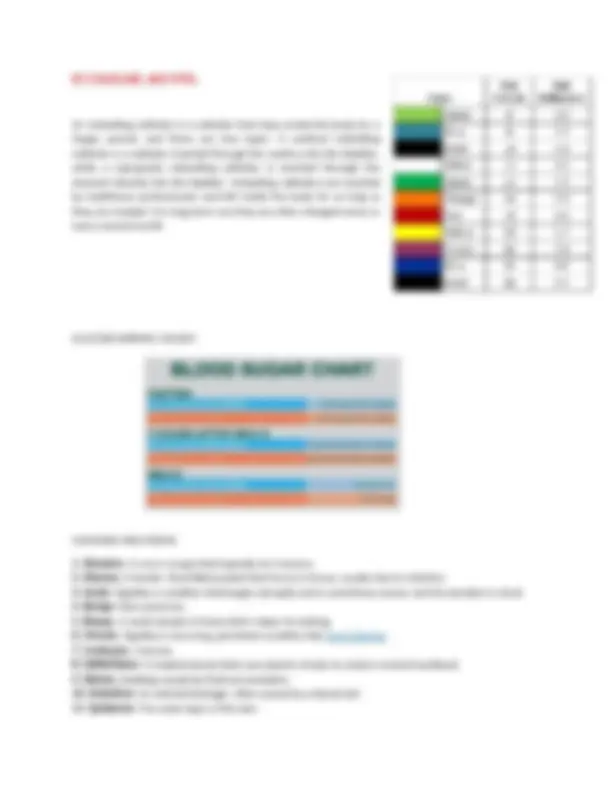
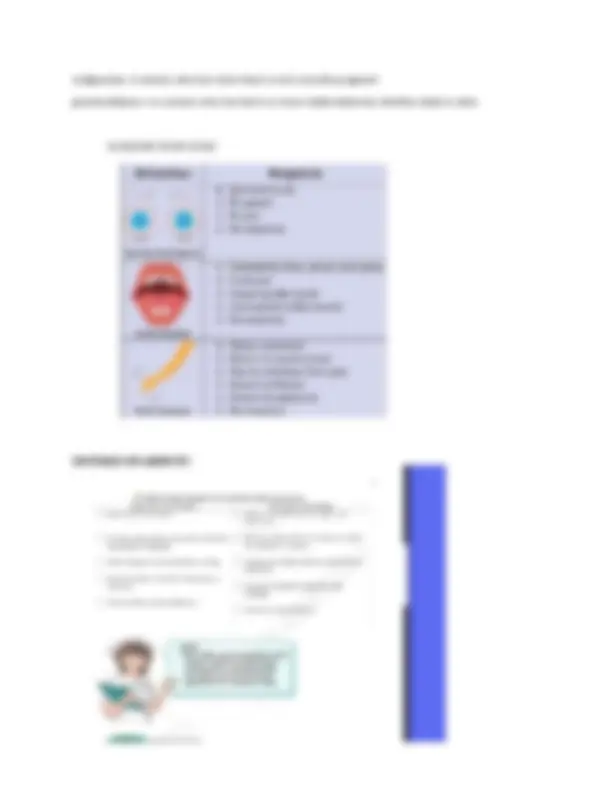

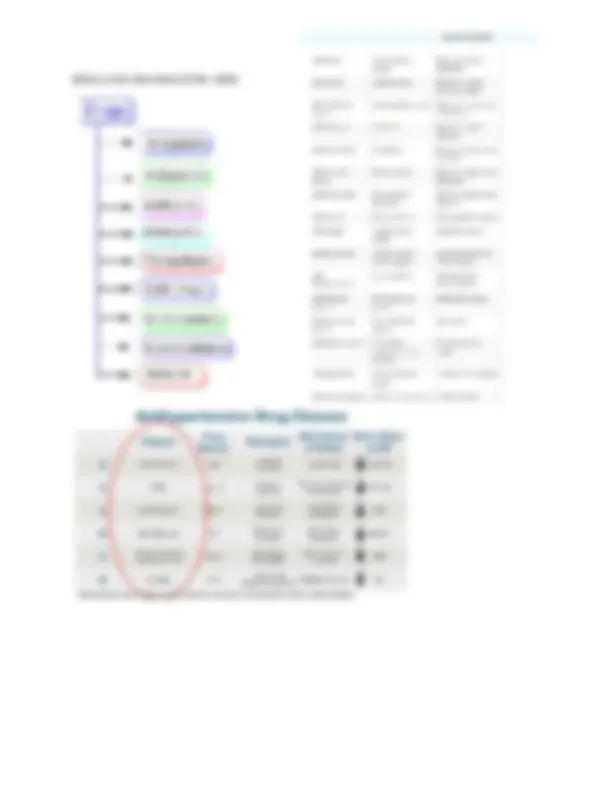
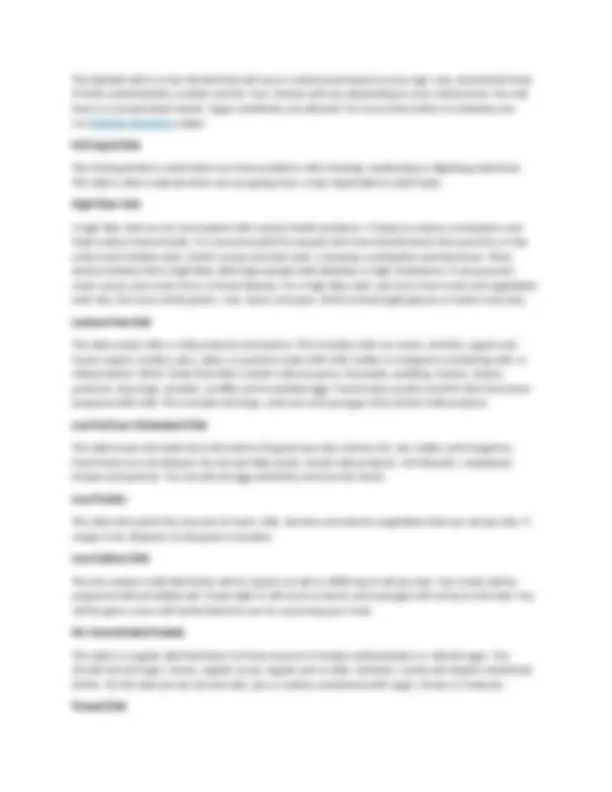
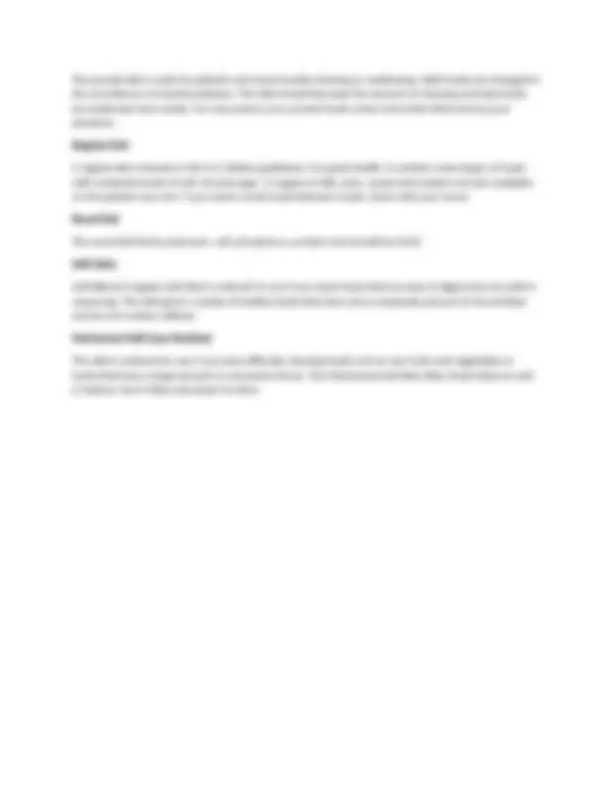













Study with the several resources on Docsity

Earn points by helping other students or get them with a premium plan


Prepare for your exams
Study with the several resources on Docsity

Earn points to download
Earn points by helping other students or get them with a premium plan
Community
Ask the community for help and clear up your study doubts
Discover the best universities in your country according to Docsity users
Free resources
Download our free guides on studying techniques, anxiety management strategies, and thesis advice from Docsity tutors
A short and precise reviewer for nursing students
Typology: Study notes
1 / 30

This page cannot be seen from the preview
Don't miss anything!























The estimated due date (EDD or EDC) is the date that spontaneous onset of labor is expected to occur. The due date may be estimated by adding 280 days ( 9 months and 7 days) to the first day of the last menstrual period (LMP). This is the method used by "pregnancy wheels" AOG Gestational age is the common term used during pregnancy to describe how far along the pregnancy is. It is measured in weeks, from the first day of the woman's last menstrual cycle to the current date. A normal pregnancy can range from 38 to 42 weeks. Infants born before 37 weeks are considered premature
IFC COLOR,SIZE, AND TYPEs An indwelling catheter is a catheter that stays inside the body for a longer period, and there are two types. A urethral indwelling catheter is a catheter inserted through the urethra into the bladder, while a suprapubic indwelling catheter is inserted through the stomach directly into the bladder. Indwelling catheters are inserted by healthcare professionals and left inside the body for as long as they are needed. For long-term use they are often changed every or every second month. GLUCOSE NORMAL VALUES COMMON MED TERMS
1. Abrasion : A cut or scrape that typically isn’t serious. 2. Abscess : A tender, fluid-filled pocket that forms in tissue, usually due to infection. 3. Acute : Signifies a condition that begins abruptly and is sometimes severe, but the duration is short. 4. Benign : Not cancerous. 5. Biopsy : A small sample of tissue that’s taken for testing. 6. Chronic : Signifies a recurring, persistent condition like heart disease. 7. Contusion : A bruise. 8. Defibrillator : A medical device that uses electric shocks to restore normal heartbeat. 9. Edema : Swelling caused by fluid accumulation. 10. Embolism : An arterial blockage, often caused by a blood clot. 11. Epidermis : The outer layer of the skin.
12. Fracture : Broken bone or cartilage. 13. Gland : An organ or tissue that produces and secretes fluids that serve a specific function. 14. Hypertension : High blood pressure. 15. Inpatient : A patient who requires hospitalization. 16. Intravenous : Indicates medication or fluid that’s delivered by vein. 17. Malignant : Indicates the presence of cancerous cells. 18. Outpatient : A patient who receives care without being admitted to a hospital. 19. Prognosis : The predicated outcome of disease progression and treatment. 20. Relapse : Return of disease or symptoms after a patient has recovered. 21. Sutures : Stitches, which are used to join tissues together as they heal. 22. Transplant : The removal of an organ or tissue from one body that is implanted into another. 23. Vaccine : A substance that stimulates antibody production to provide immunity against disease. 24. Zoonotic disease : A disease that is transmissible from animals to humans. Medical prefixes and suffixes Medical terminology follows the same structural rules all language does, including use of prefixes and suffixes. You may be familiar with some of these from words outside the realm of medicine. 25. A-, an- : Lack of or without. 26. -ation : Indicates a process. 27. Dys- : Abnormal, difficult, or painful. 28. -ectomy : Surgical removal of something. 29. -ismus : Indicates a spasm or contraction. 30. -itis : Signifies inflammation. 31. -lysis : Decomposition, destruction, or breaking down. 32. Macro- : Large in size. 33. Melan/o- : Black or dark in color. 34. Micro- : Small in size. 35. -ology : The study of a particular concentration. 36. -osis : Indicates something that is abnormal. 37. -otomy : To cut into. 38. -pathy : Disease or disease process. 39. -plasty : Surgical repair. 40. Poly- : Many. 41. Pseudo- : False or deceptive, usually in regard to appearance. 42. Retro- : Behind or backward. Medical root words Some medical root words are intuitive simply based on your experiences. If you’re an athletic person, for example, you probably know cardiovascular exercise is any activity that gets your heart rate pumping. 43. Cardi/o : Related to the heart. 44. Derm/a/o, dermat/o : Pertaining to the skin. 45. Encephal/o : Related to the brain. 46. Gastr/o : Related to the stomach.
nulligravida- A woman who has never been is not currently pregnant grandmultipara- is a woman who has had 6 or more viable deliveries whether dead or alive GLASGOW COMA SCALE OB STAGES OF LABOR ETC
1. Problem-focused diagnosis A patient problem present during a nursing assessment is known as a problem-focused diagnosis. Generally, the problem is seen throughout several shifts or a patient’s entire hospitalization. 2. Risk nursing diagnosis A risk nursing diagnosis applies when risk factors require intervention from the nurse and healthcare team prior to a real problem developing. 3. Health promotion diagnosis The goal of a health promotion nursing diagnosis is to improve the overall well-being of an individual, family, or community. Examples of this type of nursing diagnosis include: Readiness for enhanced family processes Readiness for enhanced hope Sedentary lifestyle 4. Syndrome diagnosis A syndrome diagnosis refers to a cluster of nursing diagnoses that occur in a pattern or can all be addressed through the same or similar nursing interventions.
Examples of this diagnosis include: Decreased cardiac output
The pureed diet is used for patients who have trouble chewing or swallowing. Solid foods are changed to the consistency of mashed potatoes. This diet should decrease the amount of chewing and help foods be swallowed more easily. You may season your pureed foods unless instructed otherwise by your physician. Regular Diet A regular diet is based on the U.S. Dietary guidelines. For good health, it contains many types of foods with moderate levels of salt, fat and sugar. A supply of milk, juice, cereal and crackers are also available on the patient care unit. If you need a small snack between meals, check with your nurse. Renal Diet The renal diet limits potassium, salt, phosphorus, protein and sometimes fluid. Soft Diets Soft/Bland A regular Soft Diet is ordered for you if you need foods that are easy to digest and are mild in seasoning. This diet gives a variety of healthy foods that have only a moderate amount of fat and fiber and do not contain caffeine. Mechanical Soft (Low Residue) This diet is ordered for you if you have difficulty chewing foods such as raw fruits and vegetables or foods that have a large amount of connective tissue. The Mechanical Soft Diet offers foods that are soft in texture, low in fiber and easier to chew.